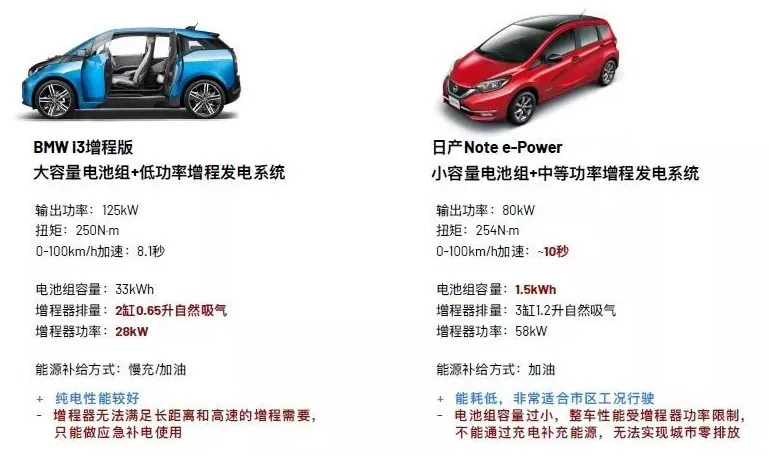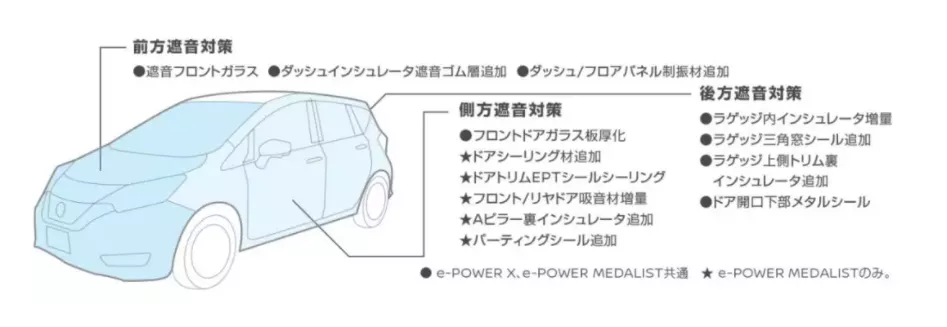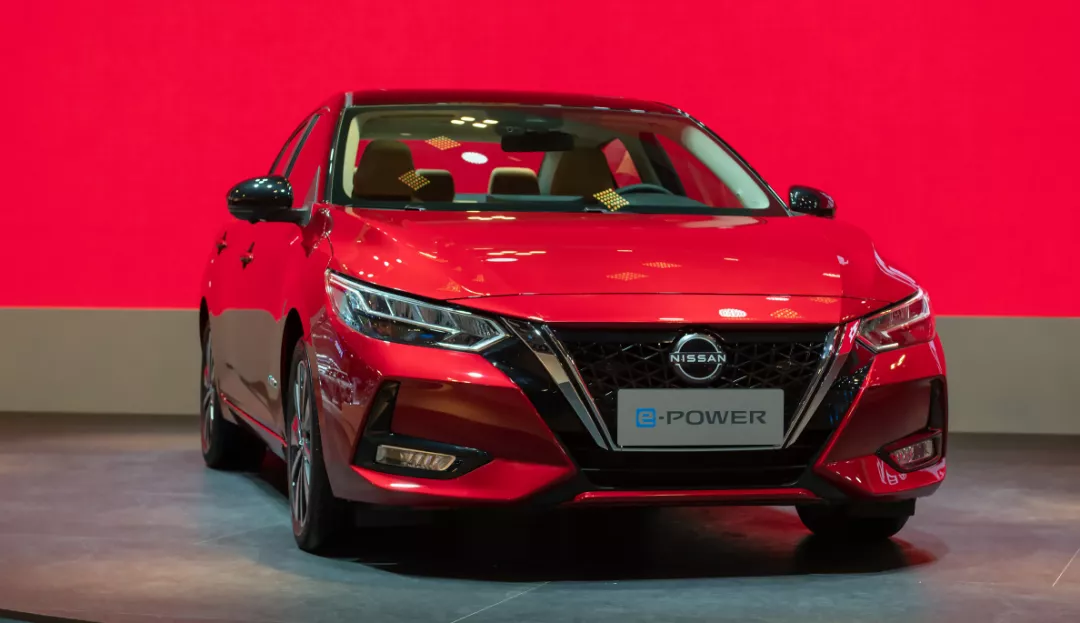Another innovative electric drive technology has arrived on the market.
On September 29, Nissan’s e-POWER, the first model of e-POWER in China, made its debut at the Tianjin Auto Show.
e-POWER achieves the advantages of pure electric while eliminating range anxiety by using a unique 100% fuel-powered generator and 100% pure electric drive system, bringing a new choice of charging-free electric vehicles to the Chinese market. This technology is generally referred to as series hybrid, similar to ideal cars, BMW i3 range extenders and other range-extended electric vehicles. However, e-POWER has a small battery capacity and a low power motor.

In terms of performance, the e-POWER model has a fuel consumption of 3.9L/100km in urban areas, and the efficiency of the internal combustion engine currently reaches up to 43%, with the generator efficiency exceeding 90%.
e-POWER is just the beginning of Dongfeng Nissan’s e-POWER. By 2025, there will be six e-POWER models landing. In the future, e-POWER will join forces with Zero Emission Nissan Pure Electric to move towards the goal of “dual carbon”.
e-POWER has been on the market in Japan for 5 years and is very popular. However, during these five years, China’s new energy vehicle market has developed rapidly. In addition to purely electric vehicles, plug-in hybrid, range extenders, and conventional hybrids have all achieved rapid development. With e-POWER’s arrival, policy favors cannot be expected, and its technical performance faces significant competition, and its prospects are uncertain.
Internal combustion engine thermal efficiency reaches 50% under experimental conditions
Nissan e-POWER adopts a series hybrid system. Although it also has an engine, it is only used to drive the generator to charge the battery and is not involved in the vehicle’s driving.
Dongfeng Nissan’s introduction of e-POWER to the Sylphy is already a second-generation product. Compared with the first generation, the second generation has lighter components. The inverter volume has been reduced by 40%, the weight has been reduced by 33%, and the motor’s torque has increased by 10%. In terms of fuel efficiency, it is claimed to have ultra-low fuel consumption of 3.9L/100KM according to official sources.The first model equipped with flash charging and discharging power type battery in e-POWER utilizes a 2 kWh battery with a charging and discharging rate up to 30C, which is 10 times that of conventional pure electric storage batteries. This system uses a professional electric motor similar to that of the LEAF, which can be precisely controlled in 1/10000 seconds achieving a professional high-power electric motor with a rating of top ten in the Ward list. The driving efficiency reaches 96%, with a peak torque of 300 Nm, providing strong acceleration and smooth power output.
In addition, Dongfeng Nissan has overcome the problem of oscillation caused by traditional motors during large torque acceleration, ensuring smooth and comfortable driving through Nissan’s unique vibration control technology. Specifically, soundproof panels are designed for the front, rear, and sides of the Note e-Power to minimize noise impact as much as possible.

Furthermore, Nissan’s internal combustion engine thermal efficiency is still improving. The official statement says that its internal combustion engine’s thermal efficiency has overcome 50% of the industry bottleneck under experimental conditions, and its future power generation efficiency and energy consumption are worth looking forward to.
Increased Hybrid models, fierce competition
In November 2016, Nissan e-POWER technology was launched in Japan first. By the end of March 2021, more than 500,000 consumers in the Japanese market have purchased vehicles equipped with Nissan’s e-POWER technology.
Whether this technology that is popular in Japan can be reproduced in China remains to be seen. After all, the national conditions are not the same, policies and consumer preferences are also different.
From a timeline perspective, e-POWER technology’s introduction to China is not early, the technology has been in existence for 5 years since its launch. In recent years, various major Chinese automakers have come up with their own hybrid solutions, such as BYD DM-i, Great Wall Lemon DHT, Chery Kunkun DHT, Changan Blue Whale iDD, and joint venture Japanese models such as Toyota THS, Honda i-MMD, and so on.
Competition in the future hybrid market will become increasingly fierce.
Compared with BYD DM-i, e-POWER has some obvious shortcomings. Firstly, e-POWER cannot be recharged from an external source, which makes it difficult to obtain a green license plate in cities with stricter regulations. Although the technology of e-POWER utilizes a small battery, there are still certain cost advantages, but as a joint venture Japanese car, its advantages may not be significant.
Secondly, due to the late introduction, whether earlier technology is still recognized nowadays needs to be tested by the market.However, with Dongfeng Nissan’s simultaneous efforts in multiple power tracks and through its focus on three major areas of intelligent power, intelligent driving and intelligent interconnection, it is accelerating the landing process in China of five core technologies including VC-Turbo engine, e-POWER, Zero Emission Nissan pure electric, ProPILOT super intelligent driving, and Nissan Connect super intelligent interconnection, promoting the transformation and electrification of traditional fuel-powered vehicles side by side. The future development of Dongfeng Nissan is still worthy of attention.
This article is a translation by ChatGPT of a Chinese report from 42HOW. If you have any questions about it, please email bd@42how.com.
